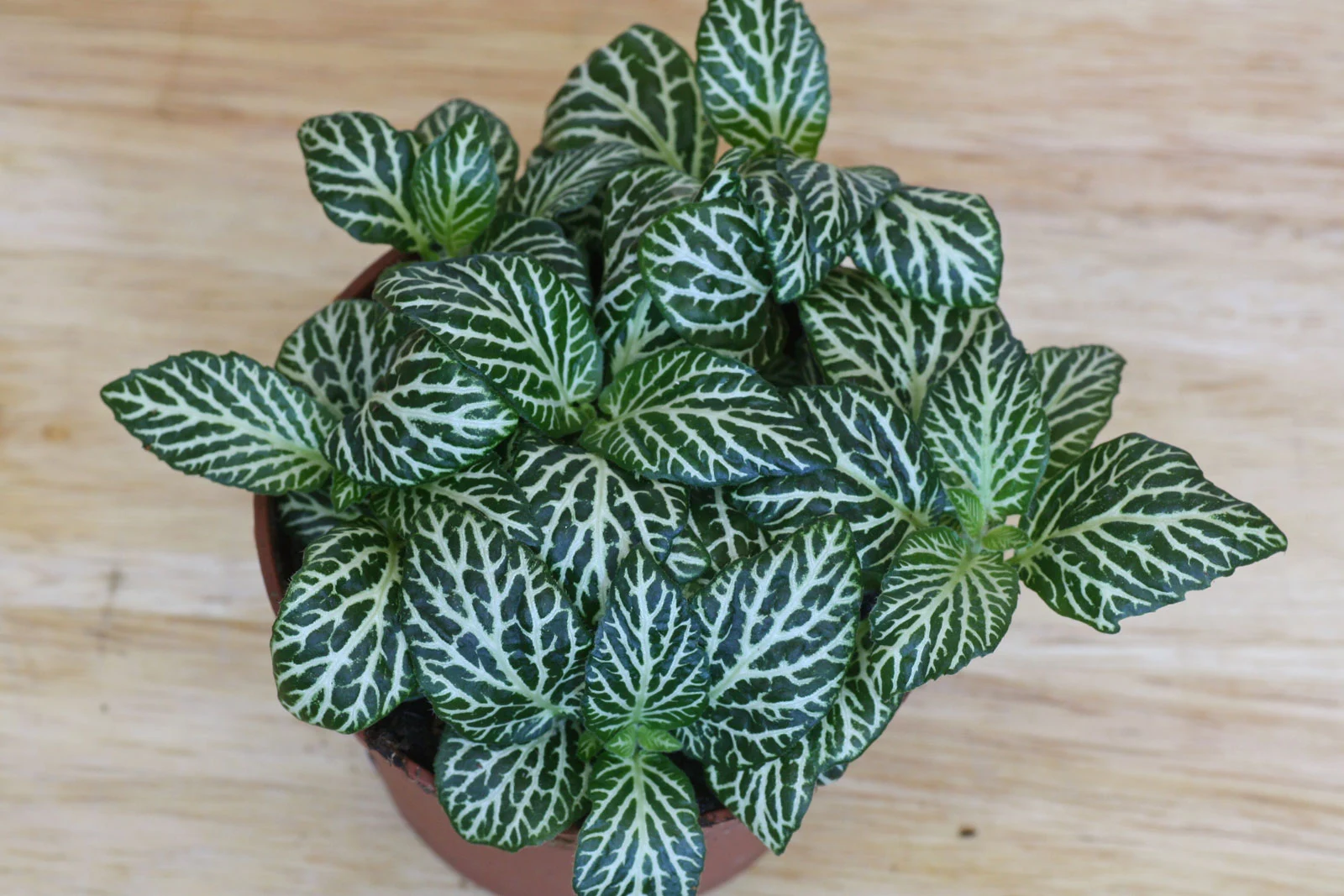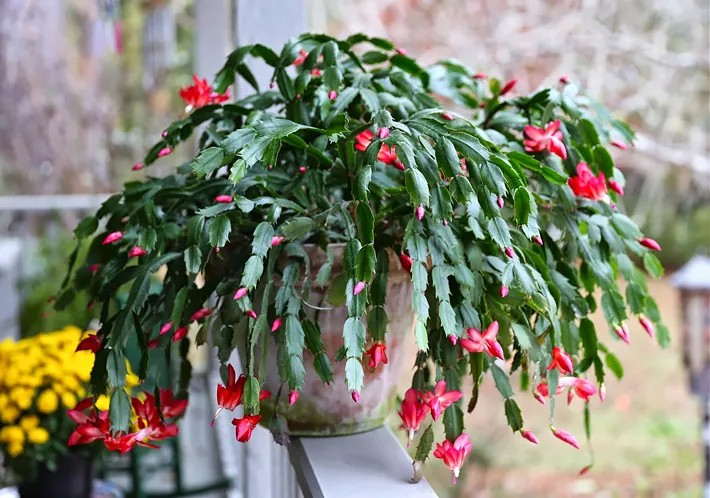Adding a touch of greenery to your home is a wonderful way to enhance your space and uplift your mood. However, if you're a pet parent, choosing the right houseplants is crucial to ensure your furry friends stay safe and healthy. Many popular indoor plants can be toxic to cats and dogs if ingested, but luckily, there are plenty of beautiful and non-toxic options out there. Here is a detailed list of 26 indoor plants that are safe for your beloved pets. 🐶🐱🪴🐾
 |
| Figure 1. Spider Plant (Chlorophytum comosum) |
1. Spider Plant (Chlorophytum comosum) Spider plants are resilient, adaptable, and thrive in a variety of lighting conditions. Their arching leaves and small white flowers make them visually appealing, and they are well-known for their air-purifying properties.
 |
| Figure 2. Areca Palm (Dypsis lutescens) |
2. Areca Palm (Dypsis lutescens) This elegant palm features feathery, arching fronds and can grow quite tall indoors. It prefers bright, indirect light and regular watering, making it a beautiful centerpiece for a pet-friendly home.
.jfif) |
| Figure 3. Boston Fern (Nephrolepis exaltata) |
3. Boston Fern (Nephrolepis exaltata) With its lush, feathery foliage, the Boston Fern is perfect for hanging baskets or pedestals. It loves humidity and indirect light and helps purify indoor air.
 |
| Figure 4. Calathea (Calathea spp.) |
4. Calathea (Calathea spp.) Calatheas are prized for their bold patterns and colorful foliage. They prefer moderate watering and low to medium light, making them ideal for living rooms and offices.
 |
| Figure 5. African Violet (Saintpaulia) |
5. African Violet (Saintpaulia) These compact flowering plants boast vibrant blooms in purple, pink, and white. They thrive in bright, indirect light and add a cheerful touch to any indoor space.
 |
| Figure 6. Prayer Plant (Maranta leuconeura) |
6. Prayer Plant (Maranta leuconeura) Named for the way its leaves fold up at night, the prayer plant thrives in low to medium light and high humidity. Its colorful, veined leaves make it a visual standout.
 |
| Figure 7. Friendship Plant (Pilea involucrata) |
7. Friendship Plant (Pilea involucrata) The Friendship Plant has velvety, textured leaves with deep green veins. It loves humidity and indirect light, and it grows quickly, making it perfect for beginners.
 |
| Figure 8. Parlor Palm (Chamaedorea elegans) |
8. Parlor Palm (Chamaedorea elegans) A low-maintenance favorite, the parlor palm grows slowly and requires minimal care. It prefers low light and moderate watering.
 |
| Figure 9. Peperomia (Peperomia spp.) |
9. Peperomia (Peperomia spp.) Peperomias come in a variety of shapes and colors, from rippled green to deep red leaves. They need minimal watering and are very adaptable to different light conditions.
 |
| Figure 10. Baby Rubber Plant (Peperomia obtusifolia) |
 |
| Figure 11. Polka Dot Plant (Hypoestes phyllostachya) |
11. Polka Dot Plant (Hypoestes phyllostachya) With its colorful, spotted foliage, the polka dot plant adds a playful touch to your indoor garden. It prefers bright, indirect light and consistently moist soil.
 |
| Figure 12. Orchid (Orchidaceae) |
12. Orchid (Orchidaceae) Most orchids, such as Phalaenopsis, are safe for pets. They offer stunning blooms and prefer bright, indirect light with occasional watering.
 |
| Figure 13. Lipstick Plant (Aeschynanthus radicans) |
13. Lipstick Plant (Aeschynanthus radicans) This trailing plant produces tubular red flowers that resemble lipstick tubes. It thrives in bright, indirect light and benefits from regular misting.
 |
| Figure 14. Ponytail Palm (Beaucarnea recurvata) |
14. Ponytail Palm (Beaucarnea recurvata) A unique, drought-tolerant plant with a thick, bulbous trunk and long, cascading leaves. It thrives in bright light and infrequent watering.
 |
| Figure 15. Cast Iron Plant (Aspidistra elatior) |
15. Cast Iron Plant (Aspidistra elatior) True to its name, this hardy plant can survive low light, irregular watering, and temperature fluctuations. It’s a tough yet beautiful option for pet-friendly homes.
 |
| Figure 16. Swedish Ivy (Plectranthus verticillatus) |
16. Swedish Ivy (Plectranthus verticillatus) Swedish Ivy has trailing stems and glossy, green leaves. It's ideal for hanging baskets and thrives in bright, indirect light with regular watering.
 |
| Figure 17. Watermelon Peperomia (Peperomia argyreia) |
17. Watermelon Peperomia (Peperomia argyreia) This plant has striking silver and green patterned leaves resembling a watermelon. It prefers bright, indirect light and moderate watering.
 |
| Figure 18. Burro's Tail (Sedum morganianum) |
18. Burro's Tail (Sedum morganianum) A succulent with trailing stems packed with plump, blue-green leaves. It requires bright light and minimal watering, perfect for sunny spots.
 |
| Figure 19. Echeveria (Echeveria spp.) |
19. Echeveria (Echeveria spp.) These rosette-forming succulents come in various colors and require bright, direct light and minimal watering, adding a modern look to any room.
 |
| Figure 20. Fittonia (Fittonia albivenis) |
20. Fittonia (Fittonia albivenis) The nerve plant is known for its striking veined leaves in shades of pink, white, and green. It prefers low light and high humidity, making it great for terrariums.
 |
| Figure 21. Bamboo Palm (Chamaedorea seifrizii) |
21. Bamboo Palm (Chamaedorea seifrizii) This bamboo-like palm purifies air and thrives in bright, indirect light. It can grow tall, creating a mini indoor jungle effect.
 |
| Figure 22. Haworthia (Haworthia spp.) |
22. Haworthia (Haworthia spp.) These small, spiky succulents require minimal care and prefer bright, indirect light. They’re ideal for desks or small spaces.
 |
| Figure 23. Hens and Chicks (Sempervivum spp.) |
23. Hens and Chicks (Sempervivum spp.) A type of succulent that produces rosettes and "chicks" that cluster around the main plant. They love bright light and dry conditions.
 |
| Figure 24. Maidenhair Fern (Adiantum spp.) |
24. Maidenhair Fern (Adiantum spp.) With delicate, fan-shaped leaves, Maidenhair Ferns thrive in humid, shaded areas and require consistently moist soil.
 |
| Figure 25. Christmas Cactus (Schlumbergera spp.) |
25. Christmas Cactus (Schlumbergera spp.) This winter-blooming plant offers colorful flowers and requires minimal watering. It thrives in indirect light and cooler temperatures.
 |
| Figure 26. Basil (Ocimum basilicum) |
26. Basil (Ocimum basilicum) More than just a culinary delight, basil can be grown indoors on sunny windowsills and is completely safe for pets. Regular harvesting encourages fuller growth.
🌿Final Thoughts
Decorating your home with houseplants doesn't have to come at the cost of your pets' safety. With these 26 indoor plants, you can enjoy lush, vibrant greenery while ensuring a pet-friendly environment. Always remember to monitor your pets around any plant, as even non-toxic varieties can cause mild digestive upset if consumed in large quantities.🐕🐈
✨ Tip: Even non-toxic plants can cause a little tummy upset if nibbled too much, so it’s still smart to keep plants out of reach (or just be ready for a few leaf casualties!






